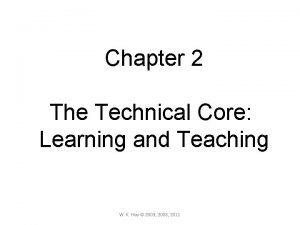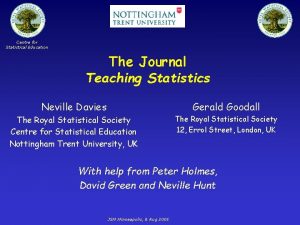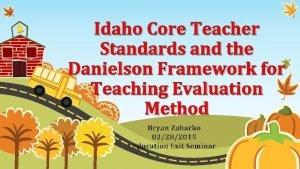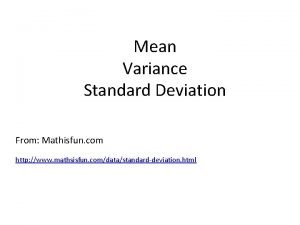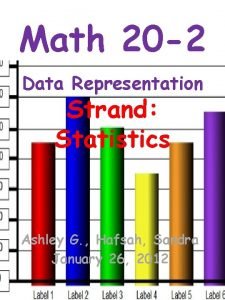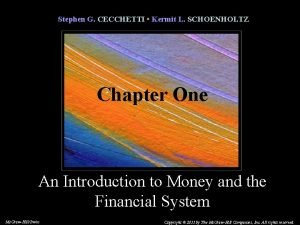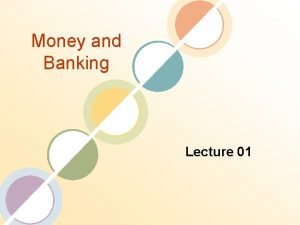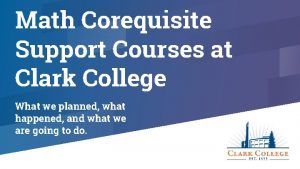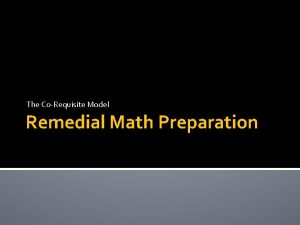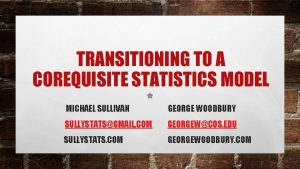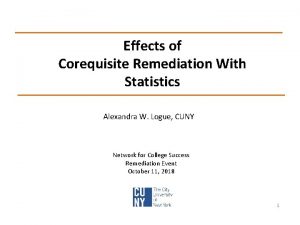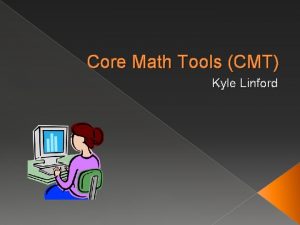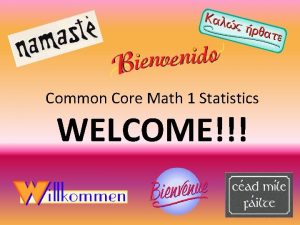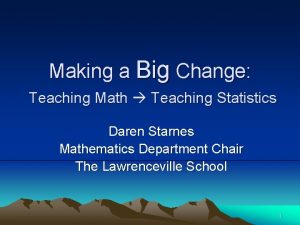CORE PRINCIPLES FOR TEACHING COREQUISITE MATH AND STATISTICS













- Slides: 13

CORE PRINCIPLES FOR TEACHING COREQUISITE MATH AND STATISTICS COURSES Presenter: Matt Teachout Date: May 11, 2019

INTRODUCTION AB 705 – Prerequisites to Corequisites How prepared are our STEM students? How prepared are our Statistics students?

CORE PRINCIPLES FOR TEACHING UNDERPREPARED STUDENTS MATH AND STATISTICS What can we do to help underprepared students succeed?

CORE PRINCIPLE #1 DO NOT ASSUME PREREQUISITE KNOWLEDGE • Do not assume students have the foundational knowledge to understand advanced topics • Always review foundational topics as much as you can. • Avoid the “Sink or Swim” mentality.

CORE PRINCIPLE #2 BUILD FOUNDATIONAL KNOWLEDGE WITH “JUST IN TIME” REVIEWS • First show the advanced topic idea and the connection to the review topic. • Review topics should be short and directly connected to the advanced topic. • Corequisite courses have extra time for “just in time” reviews • Can still build foundational knowledge in courses without corequisites. • Example: Math 090/140 Corequisite Schedule • Example: Just in time reviews for regular Math 140 classes

CORE PRINCIPLE #3 USE AN ACTIVE LEARNING APPROACH WITH PROBLEM SOLVING DURING CLASS • Keep Lectures relatively short. Lecture enough during class to explain the key ideas, but do not over-lecture. Remember, students also learn by doing. • Make sure students solve problems during class. Don’t leave it all to homework. • Check students in-class work in order to make sure students are solving problems correctly during class. That way they are less likely to make mistakes during homework.

CORE PRINCIPLE #4 USE ALTERNATE HOMEWORK STRATEGIES • Maximize in-class problem solving and make sure students are doing the problems correctly. • Keep level of homework problems similar to in-class problems. Always do the most advanced problems with the students during class. • Avoid “kill and drill” mentality. Less problems done correctly during class is better than many problems done wrong at home. Think about appropriate homework sets and the length of time it will take students to complete those problems without help. • Read sections in the book and take notes for homework • Watch supplemental instruction videos and take notes for homework. • Write paragraph explaining a key topic for homework.

CORE PRINCIPLE #5 STRESS VOCABULARY AND INTERPRETATIONS • “Lost in the trees and cannot see the forest”. Students often lose sight of main ideas in Math and Statistics. All they can see is the calculations and do not understand what or why they are calculating. • Have students write sentences and paragraphs to explain the main ideas. • Example paragraph from student. • Constantly review the vocabulary and definitions. • Example vocabulary and definitions from statistics book.

CORE PRINCIPLE #6 USE TECHNOLOGY TO BUILD CONCEPTUAL UNDERSTANDING • Teach students to use computer programs, apps and software to solve problems. Need to prepare students for real world jobs. • Using technology frees up time so students can focus on theory and interpretations. • Using technology allows students to visually see the main ideas without being lost in the calculations. • Still important to explain calculations, but do not lose sight of the main idea. • Example: Using Statcato and Stat. Key to visualize P-value and F-test statistic in ANOVA.

CORE PRINCIPLE #7 RE-THINK ASSESSMENT • Classwork points increase retention and encourage students to work hard on problems during class. Encourage students to present and explain their ideas for points. • Give points for projects. Project-based learning allows students to get realworld experience and better understanding of why they are learning this material. Major projects should be scaffolded. • Exams should be at the same level as the problems covered during your class. Think about the appropriate time for students to finish exams. I like my weakest students to still be able to finish the exam. • Give points for homework. Besides problem solving, reading assignments with notes, supplemental instruction videos with notes, and writing assignments are also valuable homework assignments.

OVERVIEW OF MATH 090/140 COREQUISITE STATISTICS

OVERVIEW OF MATH 090/140 COREQUISITE STATISTICS • Sample Schedule for Math 090/140 • Resources at www. matt-teachout. org but can also be saved on Canvas • Introduction to Statistics for Community College Students (Free OER Math 140 book. Will be completed by Fall 2019 semester) • Introduction to Data Analysis (Free OER Math 075 book. Updated 4 th edition will be completed by Fall 2019. ) • Preparing for Algebra and Statistics (Free OER Math 058/059 book)

INTRODUCTION TO USING STATKEY & STATCATO • Stat. Key is hosted online at www. lock 5 stat. com and does not need to be saved. It also works well on MAC and PC computers. • Statcato is a traditional program that is saved on all of the in-class and TLC computers. Can be downloaded or “Java Web Start” at www. statcato. org. Tends to be problematic saving or opening on MAC laptops.
 The brittle, rocky outer layer of earth
The brittle, rocky outer layer of earth Crust earth definition
Crust earth definition Core capabilities and core rigidities
Core capabilities and core rigidities Technical core: teaching and learning
Technical core: teaching and learning Micro teaching is a scaled down encounter
Micro teaching is a scaled down encounter Introduction to statistics what is statistics
Introduction to statistics what is statistics Teaching statistics journal
Teaching statistics journal What are the 3 main layers of the earth? *
What are the 3 main layers of the earth? * Idaho core standards
Idaho core standards Idaho core teacher standards
Idaho core teacher standards Math is fun standard deviation
Math is fun standard deviation Statistics math 20-2
Statistics math 20-2 Five core principles of money and banking
Five core principles of money and banking Five core principles of money and banking
Five core principles of money and banking



